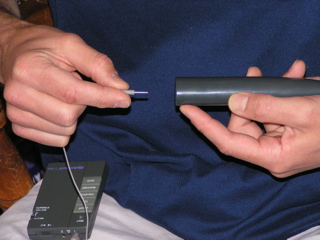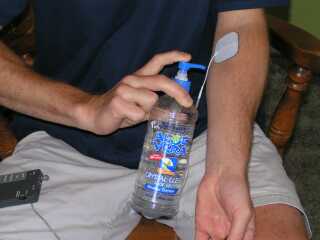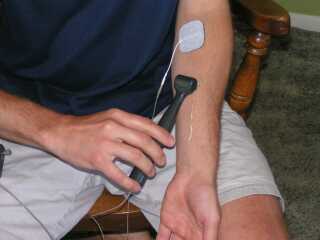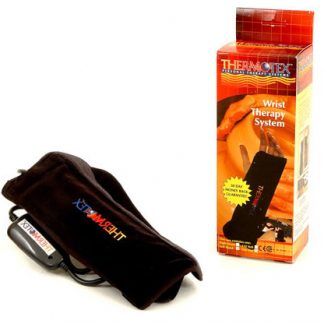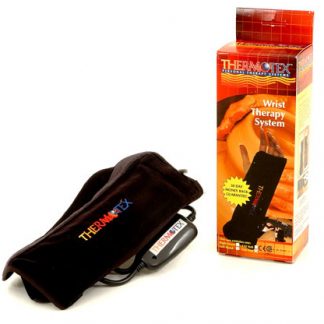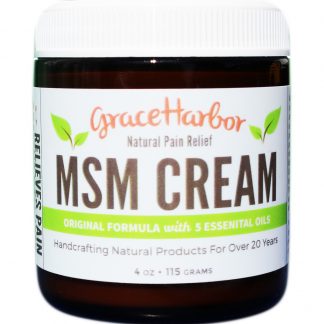“Inflammation of a tendon (tendonitis) and the lining of the sheath (tenosynovitis) usually occurring simultaneously. The synovial-lined tendon sheath usually is the site of maximum inflammation, but the inflammatory response may involve the enclosed tendon (e.g. as a result of calcium deposit). Tendonitis and bursitis are terms that may be used interchangeably to describe the same process, since bursa (see above) are often located near tendons; e.g., the subacromial bursa and rotator cuff tendons of the humerus.” – The Merck manual
“Tendonitis inflammation of tendons and of tendon-muscle attachments.” – Dorland’s pocket medical dictionary.
What is tendonitis
Tendonitis also spelled tendonitis is the inflammation of the tendons and the muscle surrounding the tendon. Tendonitis can also be associated with inflammatory diseases that occur throughout your body, such as rheumatoid arthritis. Tendonitis can cause significant pain and is the most common injury in athletes over the age of 40.
What is a tendon?
A tendon is a tough and flexible band of fibrous tissue. The tendon is the part in your body that connects your muscle to the bones. The skeletal muscles in your body are responsible for moving your bones. When a muscle contracts it pulls on a bone to cause movements. The structure that transmits the force of the muscle contraction to the bone is called a tendon.
Tendons come in a variety of shapes and sizes. The very small are like the ones that cause movements in your fingers, other larger tendons like the ones controlling movement in your arms and legs. When functioning properly, these tendons glide easily and smoothly with muscle activity. Inflammation of the sheath can cause an entrapment of the tendon, as in the case of trigger finger.
Who is at risk?
Repetitive motions with your arms or legs lead to greater risk of tendonitis. For instance, baseball players, swimmers, tennis players and golfers and carpenters are more prone to tendonitis in their shoulders, arms and elbows. Soccer and basketball players, runners and dancers are more prone to tendon inflammation in their legs and feet. Tendonitis is not limited to professional sports, improper technique at any level will increase the likelihood of tendonitis. The incidence of tendonitis increases with age as muscles and tendons lose some of their elasticity.
Prevention of tendonitis
Taking these precautions can reduce your chances of developing tendinitis:
- Avoid activities that place excessive stress on your tendons for long periods of time. For example running uphill for long periods of time.
- Vary your physical activities. Commonly called cross training, for example mix your impact exercise such as running with low impact exercise like biking and swimming.
- Check your technique, make sure your exercise technique and equipment are proper.
- Stretch- before any exercise, stretch out your muscles. Stretching will increase the range of motion of your joints.
- Drink more good quality water all through the day. Water helps the flexibility of your muscles and tendons.
Signs and symptoms of tendonitis
- Pain near a joint that is aggravated by movement
- Tenderness
- Possible swelling
Various locations of tendonitis
- Tennis elbow, Causes pain on the outer side of your forearm near your elbow.
- Achilles tendonitis. Causes pain just above your heel.
- Adductor tendonitis. Causes pain in your groin area
- Patellar tendonitis. Causes pain just below your kneecap.
- Rotator cuff tendonitis. Causes pain in the shoulder.
Using the Rhythm Touch 2-Way Electrical Muscle Stimulator
The Rhythm Touch 2-Way Electrical Massager can help bring relief from pain caused by tendonitis. By increasing the circulation in the area where the pads are placed, it helps restore the electrical balance of the area and draws blood, oxygen, and nutrients to the area.
-
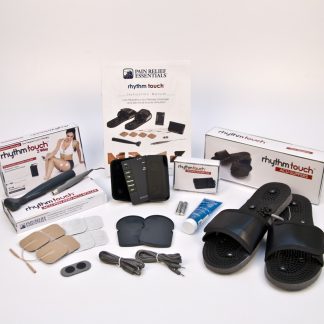
Rhythm Touch Deluxe Package
Sale! Original price was: $770.00.$499.99Current price is: $499.99. Add to cart -
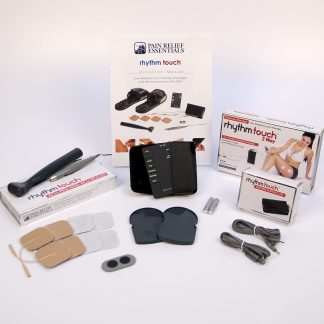
Rhythm Touch Special Bundle
Sale! Original price was: $675.00.$469.99Current price is: $469.99. Add to cart -
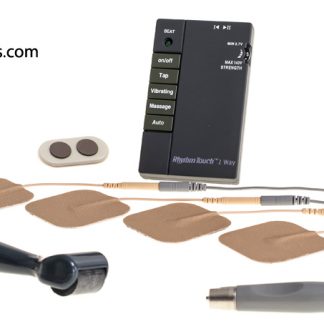
Rhythm Touch Electrical Muscle Stimulator
Sale! Original price was: $599.95.$449.95Current price is: $449.95. Add to cart

